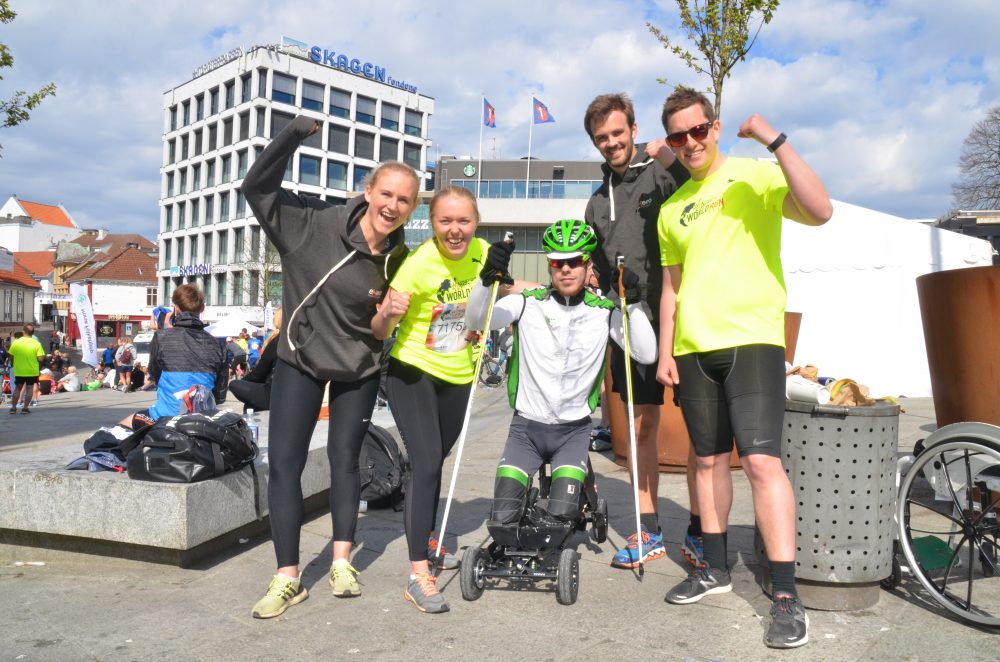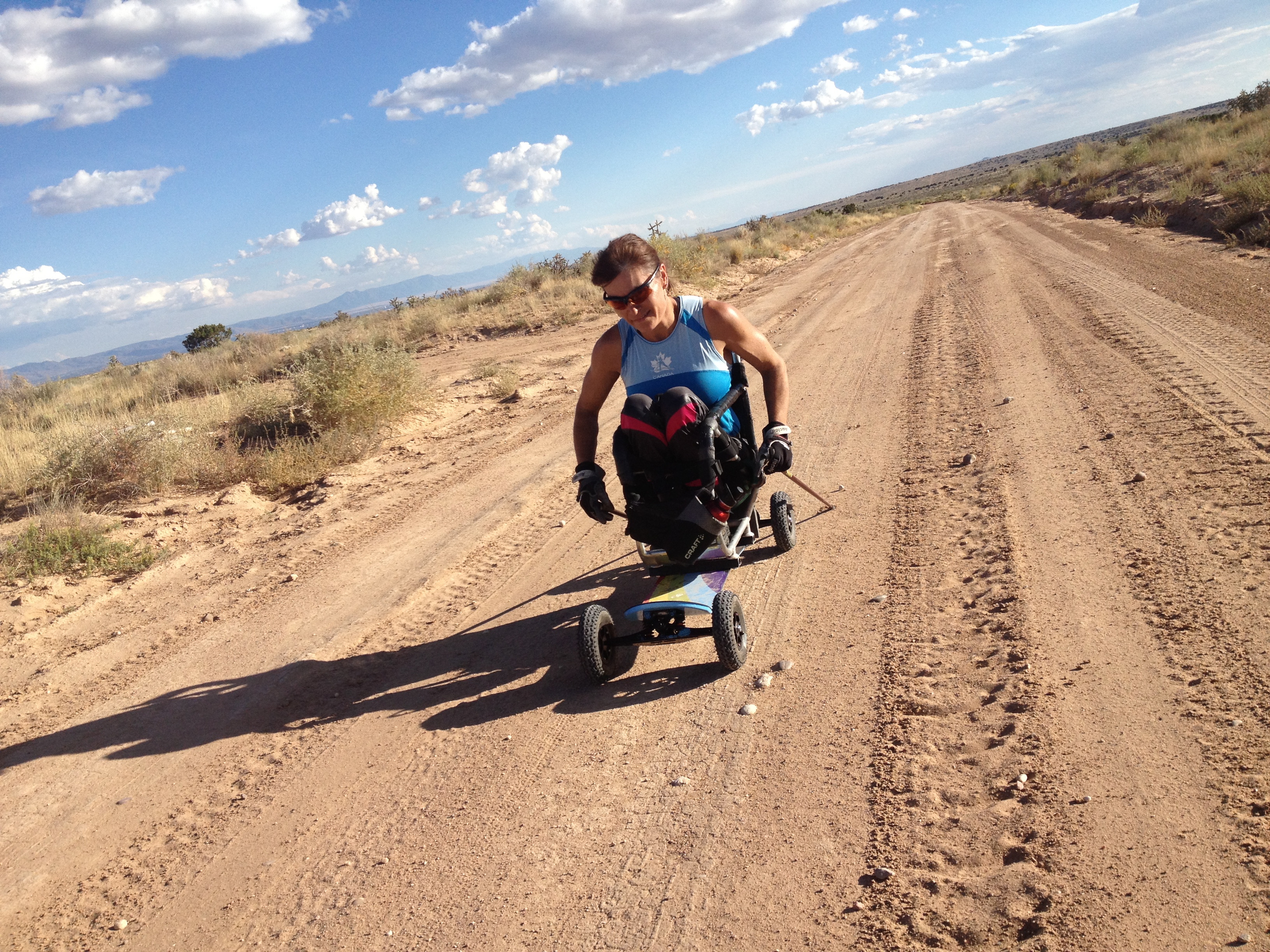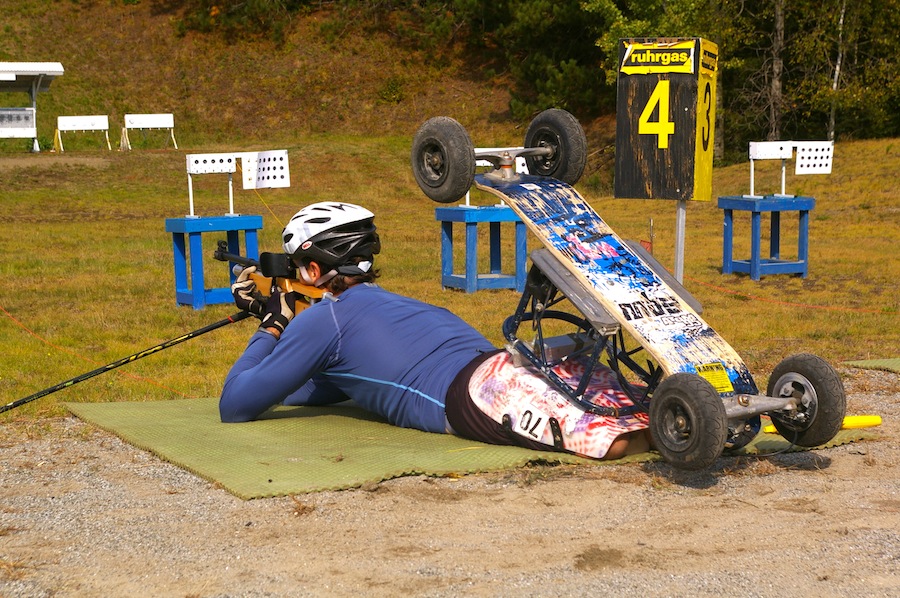
There are ah-ha moments when an idea comes — poof — out of thin air. Then there are blunt-force type ideas, when reworking, redirecting and reconfiguring brings about the desired outcome. For five students from Norway who recently formed a start-up called Exero Technologies, there’s been a mix of ah-ha and continual reconfiguring.
The group of five Norwegians, all studying at NTNU in Trondheim, includes mechanical engineers and a civil engineer with a business background, are developing a new dryland specific sit-ski. NTNU’s Business School is part of the Norway Entrepreneurship Program (NEP), which is based at the University of Oslo. A unique aspect of the program sends approximately 150 NEP students to the United States for 10 weeks during the summer.
That’s how Nicoline Bergh, Bendik Fon and Solveig Christensen, three of the five founders of Exero Technologies, found themselves on their 10-week immersion at the Boston University (BU) Questrom School of Business. Bergh described BU as ideal for refining the group’s pitch and exposing their product to new user groups.

As part of NTNU’s course requirements, students must start a business.
“This project started one year ago when the three guys on our team, they studied mechanical engineering, and they began production,” Bergh said. “Initially, the mechanical engineers in the group were given a problem that was looking for new solutions: how to win more medals in the Paralympics. They were looking for new solutions to improve athlete performance … the problem was to make a new solution for the cross-country sit-ski.”
The on-snow XC sit-ski is simple yet functional. Most often the frame is aluminum or a composite with a pair of skate skis attached to the base. The athlete sits in an affixed molded seat. Forward movement is strictly a double-poling affair. Basic, light and minimalist — on-snow sit-skis have no steering or braking mechanism. In the racing scene, they are built for speed.
Like their able-bodied counterparts, para athletes train in the offseason. That requires specialized equipment. Mountain boards, a wider and longer version of their skateboard park cousins, have been the go-to platform for dryland sit-skiing.

Mountain boards feature pneumatic tires, beefier and stiffer trucks, and in some cases a hand-operated caliper brake. A molded seat is bolted to the board. And because of the single pivots on the front and rear trucks, athletes can steer by leaning their torso.
Those modified mountain boards are a manifestation of making the best with what’s available off the shelf.
That’s where Bergh says her team’s product, the Exero Spike, will make a difference. Bergh calls the Exero Spike the “total solution”. In other words, adaptive athletes will have more steering control, comfort, off- and on-road functionality, and hand-operated front-wheel disc brakes. All that amounts to better stability and possibly a potentially bigger user group, she asserted.
Beyond the one-off mountain boards made for adaptive athletes, Bergh explained that none of the comparable products in the marketplace are best serving those adaptive athletes wanting a more fluid exercise experience.

“Products used today are mostly hand bikes and 3 wheel wheelchairs,” Bergh wrote in an email. “The handbike is both big and heavy and often difficult to manage on your own. With a 3 wheel chair, it is difficult to both steer and make progress at the same time, as you have to use a steering wheel to change direction, forcing you to stop making forward movement at the same time.”
Bergh envisions a market for the Exero Spike well beyond adaptive snow and dryland sit-skiers.
“So far, we have looked at people with spinal-cord injuries, amputees, cerebral palsy, polio, or other muscle diseases as our primary segment,” Berg emailed. “These also the segments that we are focusing on and see as the potential users. But, as we are developing a summer sports equipment, we see that the sled we are developing can be used for more than just cross country summer training. We’ve been testing with sledge hockey players and rowers, and we’ve got the impression that the movements they’re used to are quite similar to the sled we are developing.”
Bergh and her partners foresee approximately 50,000 potential users in Scandinavia (12,000 of whom reside in Norway), and two million potential users in the U.S.
Perhaps those numbers look inflated. As medical costs increase, in cases where more exercise correlates with smaller health bills in the long term, tools like the Spike, making outdoor exercise more accessible, may make sense. According to The Centers for Disease Control and Prevention estimates, 2.2 million people in the U.S. depend on wheelchairs for mobility. Another 6.5 million require a cane, walker or crutches.
“We want to make a product, that is both fun to use, beneficial in terms of health and that looks cool,” Bergh wrote. “We want to make a product for people with disabilities that don’t have the same options to do exercising as you and me. Also, focusing on design and making a cool product, it will differ from many of the alternatives today.”
Exero Technologies remains in start-up mode. Bergh said the group has no firm price set for their initial model, which they plan to release in a year.
“The longtime goal is to make several products, making a portfolio,” Bergh wrote. “By now, we’re starting out with the current product and will develop a sled for those who need their legs straight out. I think we will wait for the users’ feedback on the first product, and then decide whether we should experiment with different materials.”
On Sept. 7, Norway’s Spare Bank 1 announced Exero Technologies had won its business innovation competition: Exero Technologies was awarded 250,000 Norwegian Krone (almost $32,000 U.S. dollars).
https://www.instagram.com/p/BYyUG7lDu05/?taken-by=exero_technologies
Jason Albert
Jason lives in Bend, Ore., and can often be seen chasing his two boys around town. He’s a self-proclaimed audio geek. That all started back in the early 1990s when he convinced a naive public radio editor he should report a story from Alaska’s, Ruth Gorge. Now, Jason’s common companion is his field-recording gear.



